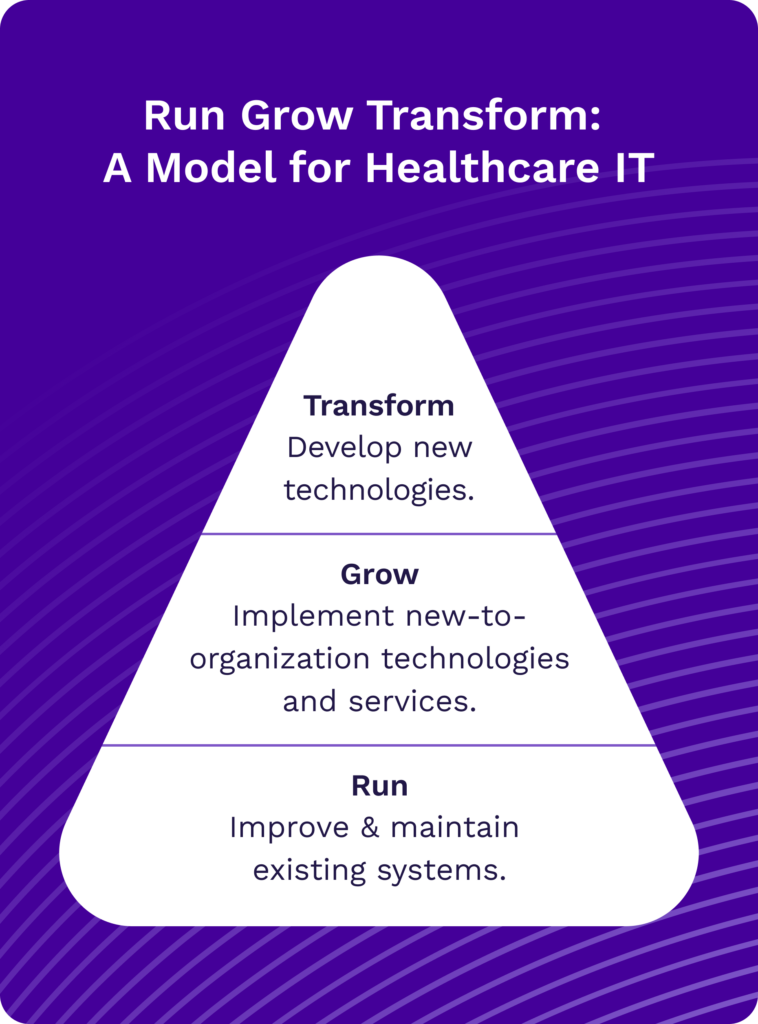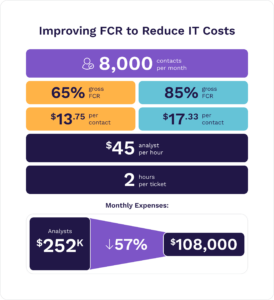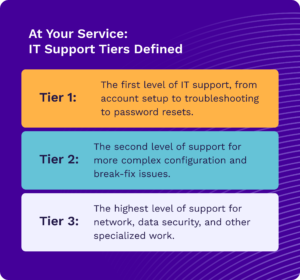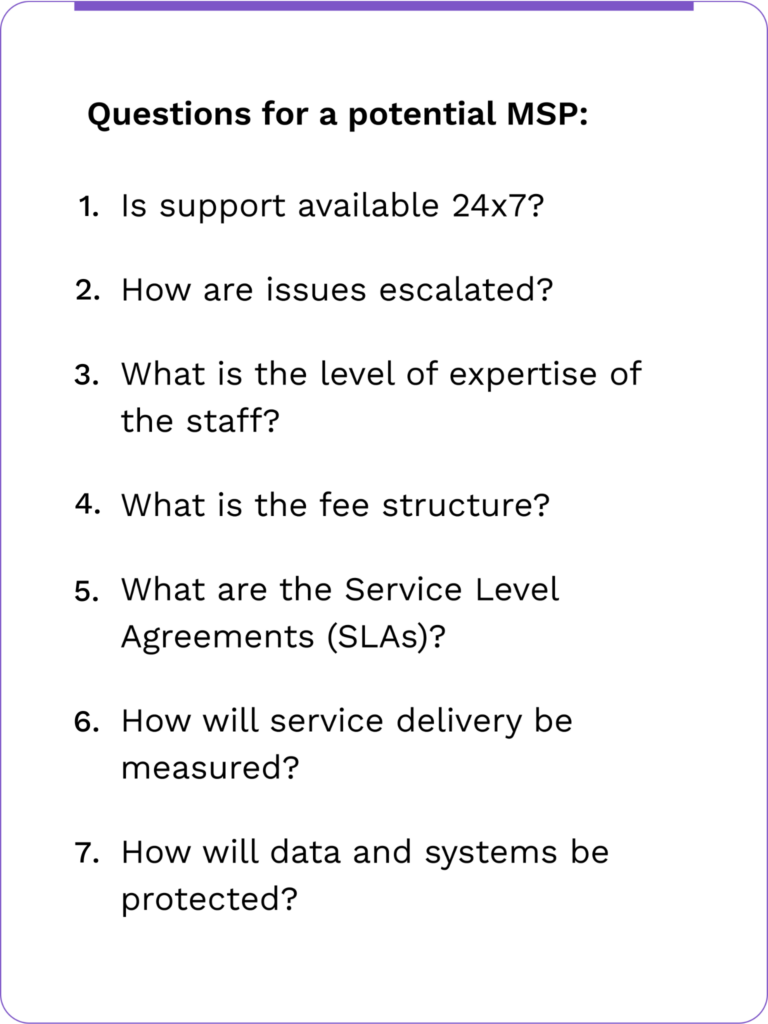Article
Your Guide to Healthcare IT Managed Services
This Article Covers
- Why Use a Managed Services Provider?
- Can Managed Services Help Healthcare Organizations Grow?
- Preparing to Partner With a Managed Services Provider
- Examples of Healthcare Managed Services
- How to Choose a Managed Services Provider
- Best Practices for Managed Services Success
- Ready for More?
- Tegria EHR Solutions
- Tegria Application Support Services
Let’s Talk About Healthcare IT Managed Services
Healthcare IT is more complex than ever before. Most healthcare leaders want to prioritize digital transformation, but retaining the technical personnel to run hundreds of systems is getting more expensive every day. A Deloitte report noted that 85% of health system leaders expected staffing challenges to significantly impact their 2023 strategy. And IT failure is costly: A recent CHIME study reported that unplanned system downtime costs large hospitals $3.2 million per hour.
Managed services can help healthcare organizations navigate this exceptionally challenging environment. Partnering with a managed service provider (MSP) can help healthcare organizations get back to healing patients in their communities and expanding access to care. Here’s help for navigating a successful transition to healthcare IT managed services, from early-stage considerations to long-term success.
Managed services are outsourced IT services handled by a third-party managed services provider (MSP). These services can include IT operations, email, help desk, data security, or cloud hosting.
Picture this: Your hospital has just secured board approval to build a much-needed new wing. Your clinicians and staff are thrilled, but their excitement is short-lived. Rather than awarding the building contract to a construction company—preferably one specializing in healthcare—the board has chosen to assign the task to your hospital’s own facilities maintenance team.
It’s not hard to spot the problems in the board’s reasoning. While the hospital’s maintenance staff are capable and trusted, the construction of a new wing is simply beyond the capabilities of this small team. Dedicating internal staff to the new wing would mean shelving other projects and stalling the team’s ongoing work. And managing the added labor needed to complete the new wing would stretch the hospital’s leaders far too thin.
Why Use a Managed Services Provider?
Healthcare IT leaders are faced with a similar dilemma, one that’s become increasingly urgent. Post-pandemic, healthcare organizations are facing unprecedented pressures to reduce spending. At the same time, new healthcare entrants from more consumer-driven industries like retail and technology are ramping up patient’s expectations for quick, convenient healthcare at their fingertips. Healthcare organizations are racing to drive down costs as they grapple with the need to improve their technology systems.
As healthcare organizations balance budget pressures with the need to innovate, internal IT teams may be asked to support increasingly complex technology systems and projects. Soon, internal IT staff may be too bogged down to see the organization’s bigger picture. Hello burnout, high turnover, and lagging productivity. Good luck getting any new projects off the ground, no matter how vital.
Thriving in this new era requires rethinking healthcare IT. The industry’s increasingly complex technology systems require a level of maintenance and customization that stresses many internal IT departments. Many internal IT teams simply don’t have the capacity or the specialized skills needed to manage these systems or the demands of the customers using the technology.
Can Managed Services Help Healthcare Organizations Grow?
Managed services are outsourced IT services handled by a third-party managed services provider (MSP). These services can include IT operations, email, help desk, data security, or cloud hosting. The MSP is tasked with remotely monitoring, updating, and managing your IT services as part of the arrangement. The MSP’s work is guaranteed under the terms of a service level agreement (SLA), which usually covers performance metrics, like uptime and 24/7 support as well as delivering post-event Root Cause Analysis (RCA) to facilitate improvement.

Managed services providers can handle ongoing IT services, facilitating innovation, growth, and transformation. Per the Run-Grow-Transform model, inspired by Gartner, the ability to grow and transform business operations relies on a solid foundation: the maintenance and improvement of existing systems.
Hiring an outside MSP to run technology systems allows the organization’s IT department to focus on the business of growing and transforming those systems. By handing over routine tasks like running the network, installing or fixing applications, managing devices, and running a 24×7 Service Desk, you free up internal staff to focus on strategic projects that further the mission of the organization.
Alternately, some HCOs only consider bringing in outside help after a project has derailed, when systems are failing, customers are unhappy, and budgets are blown. In this scenario, the consultants may come in and help put out the fires or complete the project, but once they leave, there are still messes to clean up and backlogs to wade through. Your IT team may be trapped in an endless cycle of ticket requests.
Preparing to Partner With a Managed Services Provider
Defining Goals and Objectives
When considering a major investment like engaging an MSP, an HCO needs to think about the volume and scale of their operations team. Having discussions with key stakeholders across business lines and mapping out the goals, objectives, and requirements is a good place to start when considering an MSP. These may include:
- Better uptime of systems
- Improved security posture
- Access to cutting-edge knowledge and strategies
- Ability to work with cloud solutions
- Reduced IT costs over time
- Increased customer satisfaction
- More financial flexibility
- Expediting CapEx depreciation and amortization
- Reducing talent acquisition and departure risk
Selecting an MSP: Industry-specific or agnostic?
Is technology support industry specific? In many industries, help desk support may be industry agnostic. But the specific demands of healthcare users and healthcare systems are handled most efficiently by a healthcare-experienced partner. Enlisting a healthcare-experienced vendor brings in consultants and analysts who have worked with a broad range of technologies, strategies, and systems and can offer guidance and recommendations specific to the needs and challenges of healthcare organizations, like patient privacy, data security, cloud hosting, and 24x7 support and monitoring.
Staffing Considerations
You can’t talk about healthcare IT managed services without discussing the impact on internal IT staff. Will they be replaced by the MSP or become a part of the MSP? How can leaders divide the roles and responsibilities? One model is to hand over the day-to-day system maintenance to an MSP, allowing your IT team to focus on innovation and optimization. Internal analysts can spend more time on high-priority projects and less time on daily break-fix incidents, which leads to happier employees, smoother operations, and reduced costs.
Another model involves rebadging existing IT employees. In this scenario, a vendor hires the organization’s IT employees, and those employees continue working on the organization’s IT systems. This allows the organization to retain skilled IT employees and continue uninterrupted operations while reducing IT spending.
Budget Considerations
Can a managed services provider help your organization meet its financial goals? Calculating the budget benefits of contracting with a managed services provider requires first asking yourself a few questions. How much are you losing due to inefficiencies in your systems and workflows? How much could you potentially save with better integration, increased automation, and a more productive workforce? And how could outsourcing your IT help fuel innovation and efficiency?
One way to view potential cost savings is to calculate how much you could save by increasing first call resolution (FCR), the number of support calls that are resolved without involving an analyst. By improving FCR, HCOs can reduce costly analyst hours and the overall operating costs for its service desk. While healthcare organizations typically achieve 65-70% FCR on their own, managed services providers who specialize in this type of support often achieve FCR rates of 85%, 90%, or even 95%.
Let’s take a typical call center that handles 8,000 calls per month with a 65% FCR rate. The remaining 35% of its calls are escalated to an analyst who spends an average of two hours on the ticket, at a labor cost of $45 per hour. By improving its FCR rate to 85%, the organization can reduce costly analyst hours by 57% for a savings of $144K.

Examples of Healthcare Managed Services
Managed services include one or more components of IT service operations, which include service desk, operations management, application support, and technical management. Processes that fall under service operations include event management, incident management, problem management, request fulfillment, and access management.
For many organizations, service desk operations are the first service outsourced to an MSP. Service desk operations are tiered by complexity, with less complex service requests in Tier 1 and more complex support in Tier 3.
Service Desk
Tier 1
A Tier 1 service desk, or help desk, provides continuous coverage for routine problems, from password resets to intake management. Outsourcing your help desk also enables you to hand over the resource-intensive task of managing a contingent workforce to a managed services provider. Other features that help desk managed service providers offer include:
- 24×7 operational US-based call center
- Client-branded customer satisfaction surveys
- Proactive telehealth outreach
- Patient portal support
- Built-in service recovery process

Tier 2
To elevate efficiency and accelerate operations, consider extending support beyond the Tier 1 help desk. Tier 2 support handles elevated service requests, break/fix incidents, and regular system updates. Because managing a contingent workforce with a higher level of technical skill can drain time and resources, outsourcing Tier 2 service desk support can add value to your IT strategy. An optimized Tier 2 service desk can:
- Filter up to 70% of service requests without involving analysts
- Improve efficiency nearly three-fold
- Enable internal IT analysts to focus on project work and high-priority initiatives
- Increase clinician and staff productivity
- Fix IT support costs for improved financial forecasting and cost management
- Improve employee satisfaction and retention rates
Tier 3
The highest level of technical support, Tier 3 requests include software and hardware updates, system enhancements, and design changes. Tier 3 staff often include project developers or engineers with a high level of technical skill. Some organizations choose to outsource Tier 3 support to a managed services provider, while others outsource only Tier 1 and 2 support to free internal IT staff for Tier 3 work.
A well-managed Tier 1 service desk can provide exceptional performance—think time-to-answer under 30 seconds, 95% answer rate, email response under 12 minutes, along with established best practice that can be incorporated into your IT culture.
IT Operations Management
Your MSP can take on the day-to-day management of your IT infrastructure, including incident management, problem management, and the execution of operational tasks. These services can include monitoring storage, network performance, and application performance; analyzing bandwidth, traffic, and security data; and managing IP addresses, switch ports, and configuration. Outsourcing your IT operations management to a skilled MSP fuels operational efficiencies by increasing visibility across your IT infrastructure.
Application Management and Support
For many HCOs, managing an internal IT team with the technical skills needed to manage a vast and growing suite of applications is challenging, if not downright impossible. That’s when an MSP can step in. Outsourcing your healthcare application management aligns your ancillary systems and applications with your electronic health record (EHR) platform for consistent change control and proactive incident management.
A healthcare-focused MSP can manage applications specific to leading EHR platforms including Epic and MEDITECH, offering service desk support, break/fix support, and regular system updates. An MSP can also offer consulting and program management to deploy and scale new applications, optimize existing applications, and manage projects across applications. A healthcare-focused MSP can manage ancillary applications that span the entire health system, from patient access to care navigation to radiology and diagnostics to patient financial experience.
Cybersecurity
Healthcare data breaches doubled between 2018 and 2022, spiking 42% during the COVID-19 pandemic. Partnering with an MSP for cybersecurity can help HCOs safeguard patient data and comply with privacy regulations. A cybersecurity managed services partner can offer scalable services in identity operations, vulnerability management, threat detection and response, risk management, and 24×7 incident response.
Shifting to a managed services model for cybersecurity helps HCOs shift from a reactive, incident-based approach to a proactive, strategic stance. With a partner managing daily security operations, HCOs can focus on strategic priorities and pursue innovations to help improve data security long-term. Well-managed cybersecurity services can reduce downtime and cut operating costs, help HCOs navigate an ever-evolving regulatory landscape, and access a skilled contingent workforce when needed.
Cloud Hosting
As healthcare management increasingly moves to the cloud, many HCOs choose to partner with an MSP for managed cloud services and infrastructure. Whether an organization chooses to host their data, applications, and platforms in the public cloud, private cloud, or combine cloud and on-premises resources in a hybrid model, an MSP can manage cloud services to help HCOs build, maintain, scale, and secure their cloud infrastructure. Managed cloud services can include data migration, configuration, optimization, security, and maintenance.
Partnering with an MSP to manage cloud services may involve a phased approach, starting with a focus on infrastructure, then moving on to data migration, and finally to ongoing operations management. Before migrating data and systems to the cloud, an MSP can work to build a robust cloud environment. Working with a healthcare-experienced MSP can help minimize and avoid problems associated with migrating patient data or moving healthcare applications to the cloud without interrupting operations.
Reporting
An MSP also can help you determine which types of recurring reports are needed by your organization, then handle the execution of the reports. This work covers all aspects of the reporting project, from aggregating and ingesting data to creating reports to managing data visualization and dashboards.
Other Managed Services
Examples of other managed services can include healthcare integration, legacy system support, data analytics, HR consulting, staff augmentation, digital workspaces (also called desktop as a service or DaaS), and wide area application services (WaaS). Your managed services provider can work with you to scale efficient managed services across your organization, expanding cost-savings and efficiency system-wide.
How to Choose a Managed Services Provider
A successful partnership with an MSP starts with clearly defined expectations and goals. Before interviewing potential MSP candidates, here are some initial questions you should consider:
- What are my biggest IT problems?
- What is the scope of the work?
- When do I need help?
- How do I want to work with a vendor—an integrated approach or a complete handoff?
- Will work take place remotely, or will you require any onsite resources?
- How will success be measured?
It’s also important to consider the long-term commitment you are making. You’ll want to ensure that potential partners are a good match culturally and that you will be able to work well together.

Vendor Considerations
When it comes to more specialized IT support, your managed services needs may vary depending on your EHR platform. For example, HCOs using MEDITECH’s MaaS receive some vendor-provided support, but may require additional support. For those using MEDITECH’s fully licensed model, the level of support you need could be dictated by your choice of hosting platform.
HCOs on any EHR platform, including Epic, typically run many non-EHR applications that require support. The larger your technology footprint, the more support you may need.
Tegria supports dozens of healthcare applications.
- Athena/ eCW
- CERMe/Midas
- Dragon/M*Modal
- HealthStream/WellSky/Compass
- rightfax/biscom
- 3M
- Badge system, badge printers, CCTV
- Workday/ADP
- PACS
- Cloverleaf/Qvera
- Tiger Text/Vocera/Voalte
- Sunquest/SoftLab
- Duo/Microsoft/Imprivata
- Kronos/ADP
- Pyxis/Omnicell
- DrFirst/EPCS
- PowerBI/Tableau
- UpToDate
- Symantec/BitLocker
- Press Ganey/SurveyMonkey
- Finesse/RingCentral
- Telehealth/Telesitting
- Citrix/VMWare
- NextGen/Centricity/Cerner
As EHRs and healthcare applications evolve to incorporate AI, BI, and predictive analytics, healthcare IT support needs become more specialized. Selecting an MSP with specific expertise related to your EHR platform can help you scale your IT managed services across systems and applications to suit growth, special projects, and a dynamic application portfolio.
Best Practices for Managed Services Success
One of the first factors to address within your organization may be the negative perception associated with outsourcing. Clear, effective communication about the goals and benefits of the outsourcing agreement can help alleviate fear and anxiety around the transition. In many cases, internal IT teams benefit from working with an MSP, including the possibility of rebadging, or incorporating existing IT staff into the MSP team, where they will see greater opportunity for growth, competitive benefits, and more. In any case, working together through the change management process should be something that your MSP has the expertise to help with.
An important part of a successful change management process will involve a comprehensive cost-benefit analysis. Examine the costs associated with the shift and where you will save and benefit in the future. Some benefits will be softer than others, but it is important to consider the complete picture.
Clarifying expectations on both sides of a managed services arrangement is critical to success. Consider the metrics you will use to determine progress and success, the optimal timing to bring managed services live, the process for incremental improvements, and which items are in-scope. Bumps in the road are inevitable, but many problems can be avoided by open and honest discussion about needs and requirements on both sides of a managed services arrangement.
You wouldn’t expect your hospital’s facilities management team to build a new hospital wing. And you shouldn’t expect internal IT teams to manage everyday operations along with customer service, sophisticated new applications, data security, and cloud infrastructure. Expertly managed technology services can improve operations and reduce spending, so HCOs can focus on investing in the innovations patients and providers need.